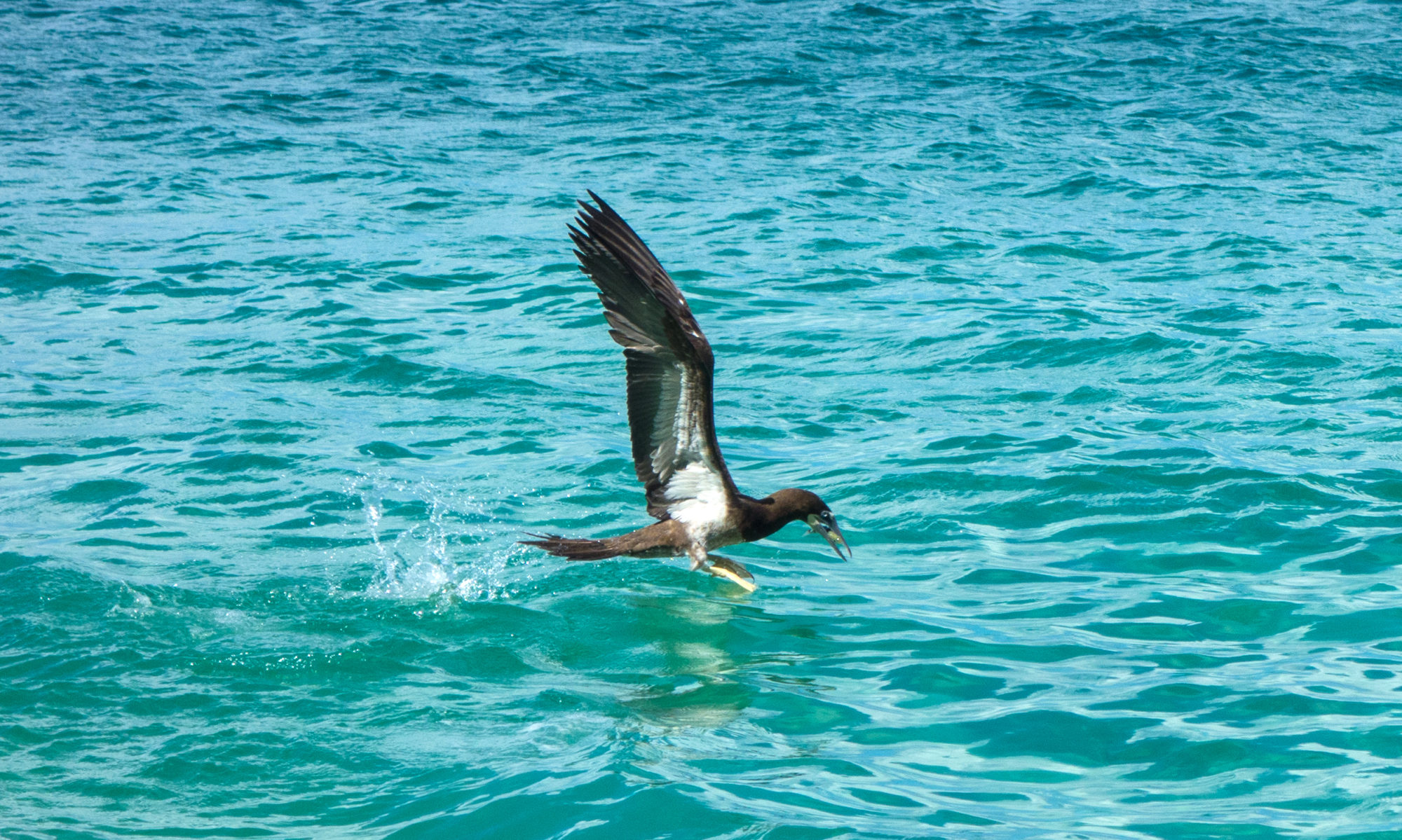Sargassum is a type of seaweed that floats on the water due to gas-filled bladders known as “grapes” or “berries”. Unlike other types of seaweed, it doesn’t need the support of the sea-bed in order to reproduce, it’s able to do so on the ocean’s surface. With the help of currents in the Atlantic it arrives on Bequia from the Sargasso Sea, and until the last decade or so it usually came in small quantities for a 2-3 week period.

In small quantities sargassum nourishes aquatic life, but in larger quantities it can and DOES rob the water of oxygen to the extent that fish die and coral reefs are damaged. The small clumps Bequia received in the past had a more positive impact on the island’s coastal environment, but those days seem to be gone. Now, from April until December vast quantities of the stuff can be seen marching in lines across the mouth of the harbour, and
a lot of it gets washed ashore on the windward side of the island. Once the weed is ashore and heated by the sun it releases smelly gases (hydrogen sulfide), creating a breeding ground for insects and a stink not unlike that of rotten eggs. The sea eventually reclaims the weed, but the time it spends piled up on the beaches makes for unpleasant seashore activities.

The millions of tons of sargassum weed floating across the Atlantic is being closely monitored, and it’s pretty grim. It flourishes with the warmer water temperatures, and the effect it’s having on tourist destinations in the Caribbean is frightening. No-one wants to vacation where beaches are filled with the noxious-smelling weed, weed that gets tangled in the rudders of yachts and the propellors of boat engines. No-one wants to eat at an ocean-front restaurant that smells like a sewer either, and who can possibly blame them?

A few years ago my grandchildren came for a visit, and I was anxious to take them to Hope Beach on the windward side of the island. They were now old enough to learn how to ride the waves on boogie boards, and we hiked down the trail with high spirits. As we wended our way through the coconut trees I regaled them with stories of similar hikes to the Hope when their mother was little, when we searched for beach treasures such as horse eyes and fanciful pieces of driftwood, and played in the surf that the children could already hear but not yet see. You can imagine my disappointment when we finally arrived at the beach and found it buried in smelly sargassum weed! We DID find a patch near Koven’s corner that wasn’t too bad, but horse eyes and driftwood treasures would not be happening that day, and we would be playing amidst clumps of weed being washed ashore. It wasn’t nice.


People will argue about the pros of sargassum, pointing out that it can be used as a fertilizer, or made into face creams. That’s all fine for locations where the collection and processing of the weed is possible; here on Bequia it’s a nuisance, and it’s getting worse. When the wind blows in a certain direction the dreadful smell permeates the harbour, at times so much that it stings the eyes. Hopefully it’s a cyclical occurrence and will ease off, but I doubt it. Global warming is affecting the planet in several ways, and the dramatic increase of sargassum weed is one of them. Mother Nature isn’t happy.





Thank you for posting this. I believe it is an ecological disaster that no one wants to comment on because of the negative effect it could have on tourism. But it has to be dealt rather than just being swept away literally and figuratively and the sooner the better. It’s part of what some call climate change and I would argue should simply be called too much pollution because of too many people.
I agree, and too many people = pollution = climate change.
The good news is so far this year there has been very little sargassum on the windward beaches. Keeping my fingers crossed it’s stays away!
The sargassum is typically much less when the trade winds are blowing, which is of course during mid-Dec – mid-February.
Does it affect the southern part of Bequia?
Not often, but it DOES happen depending on wind direction and current.